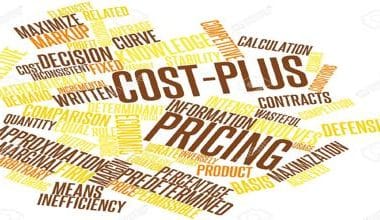There are a number of other marketing KPIs that will help your business lead a more successful digital marketing strategy,, product marketing’s main objective is to introduce a good or service to the market. Today’s product marketing is more data-driven than ever before, making it simpler than ever to monitor its effectiveness and determine whether your strategy is on track. This article contains all you need to know about marketing kpis and it’s effective guide.
Despite the fact that many people believe these common KPIs to be the best measures of success. You can determine which campaigns and tactics have the biggest influence on whether you succeed in reaching your sales and marketing objectives by using the appropriate marketing KPIs.
What is KPIS Marketing?
Marketing KPIs are quantifiable metrics that your business can monitor to evaluate the effectiveness of channel-specific marketing initiatives.
It demonstrates the Return on Investment (ROI) regarding the efficacy of marketing campaigns and strategies so the company can expand on what is successful and make adjustments for what is not.
Examples of Marketing KPIS
Here are the examples of marketing kpis:
#1. Marketing Return on Investment
the difference between a marketing investment’s profit and its expense.
ROI is defined as (Sales revenue – Marketing cost) / Marketing cost.
It’s crucial to calculate your marketing ROI because it will show you how valuable and successful your marketing efforts were. Some marketing strategies will work better for your company than others.
#2. Churn Rate
the percentage of customers who leave a business over a specific amount of time.
#3. Attribution of Pipeline Contribution to Revenue
the proportion of opportunities that are measured and result in new transactions.
#4. The ratio of traffic to marketing qualified leads
the proportion of marketing-qualified leads generated by that traffic to the entire amount of traffic that the platform generated.
You may better understand your best-performing platforms and enhance your investment there by examining your traffic to MQL ratio.
Similar to this, if one of your platforms isn’t performing well, you can use the data to adjust your strategy there or just cut costs!
Content Marketing KPIS
Content marketing kpis is the core of the strategic marketing approach known as Creating, producing, and disseminating free, worthwhile, and pertinent material, such as blog posts, white papers, case studies, e-books, infographics, etc.,
Businesses are making use of the potential of content marketing to build an online community, create leads, raise brand awareness and trust, and ultimately boost online sales.
KPIs for Content Marketing
#1. Released Marketing Material
the quantity of weekly or monthly content releases, such as blog entries, newsletters, podcasts, social media updates, etc.
#2. Channel-Specific Video View Counts
the length of time someone spends watching your video, in seconds or minutes. This typical metric will enable marketers and creatives to create compelling and captivating opening five, ten, or thirty seconds.
The demand for (and potential of!) video marketing has increased with the rise of consumer-based mobile traffic. Brands have the chance to inform and interact with consumers, and you don’t want to lose out on leads that might go to your rivals.
What is the Significance of Monitoring KPIs?
The main advantage of monitoring content marketing KPIs is that they helps you determine whether your material is producing the desired results.
How to pick effective KPIs for your campaigns in content marketing
A 2020 Content Marketing Institute B2B study found that email engagement, website traffic, and website engagement are the metrics that are most often used to measure the performance of content.
Digital Marketing Kpis
Digital marketing KPIs are quantifiable metrics used by a marketing team to monitor their progress toward their goals. KPIs outline the objectives and activities to achieve a target or objective, such as increasing revenue or website referral traffic.
Metrics for Digital Marketing that every Business should Monitor
Online Marketing Marketing teams use metrics and KPIs to gauge and monitor the success of a digital marketing campaign. Tracking the results of the various platforms and tools that digital marketing teams use to promote their product or service can be time-consuming and difficult.
Setting goals and KPIs and evaluating performance against them suddenly becomes simple when digital marketing teams create specific marketing KPIs and track them on a dashboard.
What Digital Marketing Metric is the Most Crucial?
The most crucial KPI for marketing teams is revenue. For marketers, even if MQLs or website traffic are your main priorities, all KPIs should ultimately result in revenue. Although revenue is the primary KPI, most marketers will also use a few others to track the factors that influence revenue growth, such as return on ad spend or cost per new customer.
To quickly assess the high- and low-performing areas of the business, revenue offers insight into the income generated across various revenue streams. Your KPIs may need to be revised if marketing isn’t bringing in any money.
How do you Monitor the Effectiveness of Digital Marketing?
Your marketing team can see the performance of your campaigns in real time by tracking digital marketing metrics and KPIs. Making data-driven decisions that support the expansion of your business is possible when you and your team use a dashboard to visualize your digital marketing analytics.
What are the 5 Marketing Metrics?
#1. ROI (Return on Investment) (Return on Investment).
The most popular, and likely most straightforward,, formula is ROI. It shows the gain and/or loss of an investment by comparing and measuring the amount of return on an investment with the investment costs.
ROI is often used with other methods to help build important business plans based on the metrics that are gathered. One company may use it to evaluate a return on a stock, while another may use it to make vital decisions on whether the new PPC or SEO strategy is effective.
#2. CPA (Cost Per Action) (Cost Per Action)
It is a formula that measures the amount a business has paid to attain a conversion. CPA is also used to describe a marketing strategy that allows advertisers to pay for a specific action taken by potential customers, such as making a purchase or filling out a form. CPA campaigns are relatively low-risk, as costs are only accumulated once the desired action has occurred.
Cost per acquisition is how most businesses define CPA. As an illustration, a business spends $1,000 on an SEO strategy. Their CPA is $10 per client. Subtract the advertising campaign’s cost from its conversion rate.
#3. ROAS (Return On Advertising Spend) (Return On Advertising Spend)
Simply put, ROAS is a method for calculating the revenue generated by advertising. It evaluates how much money you make for every dollar spent on advertising, making it the most helpful metric to employ when assessing the effectiveness of marketing initiatives. While ROI might provide you with a broad perspective, applying ROAS formulae enables you to obtain precise performance evaluations based on each marketing network used. For instance, you can use ROAS to analyze particular campaigns and ad groups to have a better understanding of how to improve unproductive advertising.
#4. CLV (Customer Lifetime Value) (Customer Lifetime Value).
The metric takes everything into account, from their initial contact to their last transaction with your business. This is crucial to figuring out whether long-term marketing channels are more valuable.
In other words, if your CLV value from a particular marketing channel is high, you should invest more in customer retention, assuming your ROI is positive. This indicator also enables you to assess the effectiveness of your company’s marketing initiatives over the long run.
#5. Rate of Customer Retention
A metric used to determine how devoted your customers are is the customer retention rate. You can enhance your business strategies by learning how devoted a customer is to your business. You’ll increase your revenue if you can persuade devoted customers to do business with you for an extended period of time.
Marketing KPIS B2B
Your B2B marketing strategy’s performance evaluation needs to be given top priority.
Finding leads, nurturing them, and persuading them to purchase your product or service takes time.
Because of this, it’s crucial to track the right KPIs for B2B marketing, which will enable you to understand your performance and make improvements for both your current and future campaigns.
You should pay attention to the following:
#1. Cost per Lead (27)
The two most crucial marketing KPIs in lead generation are lead quantity and lead quality, as we mentioned at the beginning of our article. Considering how much each lead costs to obtain is one of the most crucial things related to them because leads are so important. You can monitor this KPI across various marketing channels to determine how well each one of them performs in terms of bringing potential customers to your company.
#2. Landing Page Conversion Rate
Every landing page’s objective is to persuade visitors to take a specific action, like downloading a white paper, subscribing to a newsletter, signing up for a free trial, completing a form, signing up for a webinar, etc. You may define conversion targets for landing pages and track the quantity and caliber of leads that each landing page produces.
#3. Sales Pipeline Velocity
A key B2B marketing KPI called sales velocity gauges how quickly you’re making money.
The sales pipeline velocity demonstrates the speed at which leads are flowing through your pipeline and the overall value that customers provide to your company over time.
You may close more deals more quickly the faster the leads are moving.
#4. Sales Closing Rate
A salesperson’s success rate in closing deals is gauged by their sales close rate.
By dividing the total number of concluded deals by the total number of lead chances the salesperson had during a specific time period, you can quickly compute that.
What are the Metrics in B2B Marketing?
B2B marketers track, document, and evaluate performance using marketing analytics.
For a marketing campaign to be really evaluated for effectiveness and to determine whether or not changes are required, the figures are not predetermined and will need to be continuously tracked throughout.
What are the 3 Types of Kpis?
Essential marketing KPIs should be part of your SaaS marketing plan if you want to impress your CEO and boost sales. These are them:
#1. Qualified Leads from Marketing (MQLs)
These are targeted leads who, as a result of marketing initiatives, have expressed interest in a B2B company’s product or service. They can be incorporated into your pipeline and, in general, fit your ICP.
Before transferring leads to your outbound sales team and moving them out of the marketing funnel, it is always a good idea to qualify them.
This will guarantee that low-quality leads don’t start to appear in the metrics for the sales funnel further down.
#2. Opportunities that Qualify for Sales (SQOs)
Your sales team has identified them as a prospect who is very likely to become a customer, so you should pay close attention to this marketing success metric.
They are strongly indicative of incoming revenue while also telling you which of your campaigns are performing well.
You’ll want to look at your cost per SQO to determine the success of your digital marketing campaigns.
Cost per SQO = Cost Per Lead (CPL) / marketing spend for total number of new opportunities.
#3. Web Traffic
Website traffic is a good success metric, as the results will tell you whether or not your campaigns and SEO lead generation are working for your desired locations.
You can measure and monitor traffic via a tool like Google Analytics. Just be sure to look at specific lead sources, such as an organic keyword or a targeted ABM campaign, for the most accurate results.
What Should be the Kpis for Marketing Manager?
Marketing KPIs evaluate the success of your marketing strategy to advertise itself to its target audience. With the aid of these beneficial KPIs, organizations will be able to monitor their progress toward a specific objective using your marketing channels.
The cost of marketing compared to sales, brand and product development and management, advertising penetration and success metrics by media type, public relations and communications, and market growth and research metrics are examples of marketing KPIs or Key Performance Areas that must be measured.
Real-time KPI tracking gives the marketing manager the chance to spot negative short-term trends and take preventative action to correct them before they turn into major crises.
What is the Most Important Kpis in Marketing?
#1. Sales Increase
It should come as no surprise that one of the most important KPIs for marketing managers and businesses in general is sales growth. Any business owner wants to increase sales; investors are concerned about it; and employees are working hard to make it happen. It gauges how quickly a business has been increasing its sales-related revenue over a predetermined time frame.
We advise you to start measuring your sales growth right away if you aren’t already. It enables you to forecast and set reasonable sales and revenue goals in addition to identifying growth trends.
#2. Leads
To appreciate the worth of leads, you don’t need to be a quantum physicist.
It’s straightforward: the more leads you generate, the more sales possibilities you have, and the higher your chances of seeing sales growth.
The two most crucial marketing KPIs for lead generation are lead quantity and lead quality.
The number of prospects who see or click on your lead magnet will be the number of overall leads that you have generated, whereas the number of quality leads is the number of prospects who are likely to become paying customers, for instance, if your business produces SaaS and offers new customers a free trial.
#3. Return on Assets (ROI)
If you haven’t measured your ROI yet, you should start doing so immediately because it’s one of the most popular marketing KPIs.
Maintaining a record of your marketing ROI will make it simpler for you to defend marketing expenditures, estimate marketing effectiveness, and ultimately support the development of future marketing plans.
#4. Customer Lifetime Value (LTV)
How much does each client mean to your company? This marketing KPI calculates the overall revenue a company might expect from a single client. Although the figure you’ll arrive at is approximative, it’s useful to have a ballpark figure. It is an excellent approach to plan out future business objectives and aids in determining how much money to spend on marketing initiatives.
#5. Cost of Getting a New Customer (CAC)
The overall marketing and sales resources required for a corporation to attract new customers are measured by the customer acquisition cost KPI, a crucial business statistic.
When determining the value created by a new client, it is frequently used in conjunction with the customer lifetime value statistic.
Conclusion
The best part about sales and marketing KPIs is that you can tailor them to your company’s and each team’s needs. You can identify which tactics are effective and which ones aren’t by examining these indicators, and you can then modify your efforts accordingly.
Related Articles
- Key Performance Indicators KPIs: 145+Examples of KPIs
- Strategic Risk Management: Overview, Plans, Implementation (+ Free tips)
- Management Reports: Guidelines for Management Reporting
- WHAT IS ROI: Meaning, How to Calculate It, and Guide for A Business
- MONITORING SALES PERFORMANCE: How to track Sales Performace (+Quick Tools)






